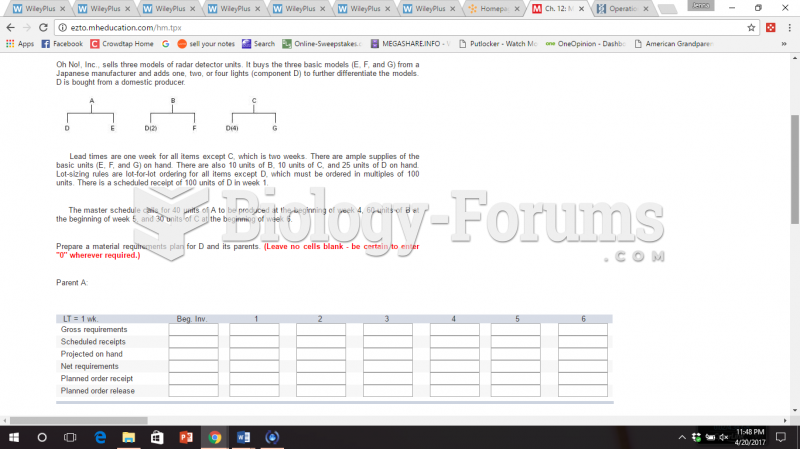Answer to Question 1
The five basic steps to make better use of your time are:
1 ) Find the time killers. Many people do not know how they spend each part of the day. Keep a 4- to 7-day log and record at half-hour intervals the activities you do. Record the activities as you go through your typical day, so you will remember all of them. At the end of each day, decide when you wasted time. You may be shocked by the amount of time you spent on the phone, on the Internet, sleeping (more than 8 hours per night), or watching television.
2 ) Set long-range and short-range goals. Setting goals requires some in-depth thinking and helps put your life and daily tasks in perspective. What do I want out of life? Where do I want to be 10 years from now? Next year? Next week? Tomorrow?
3 ) Identify your immediate goals and prioritize them for today and this week. Each day sit down and determine what you need to accomplish that day and that week. Rank your today and this week tasks in four categories: (a) top-priority, (b) medium-priority, (c) low-priority, and (d) trash.
4 ) Use a daily planner to help you organize and simplify your day. In this way, you can access your priority list, appointments, notes, references, names, places, phone numbers, and addresses conveniently from your coat pocket or purse.
5 ) Conduct nightly audits. Take 10 minutes each night to figure out how well you accomplished your goals that day. Successful time managers evaluate themselves daily. This simple task will help you see the entire picture. Cross off the goals you accomplished and carry over to the next day those you did not get done. You also may realize that some goals can be moved down to low-priority or be trashed.
Answer to Question 2
Explanatory style is a way of thinking when all other factors are equal and when there are no clear-cut right and wrong answers. The contrasting explanatory styles are pessimism and optimism. People with a pessimistic explanatory style interpret events negatively; people with an optimistic explanatory style interpret events in a positive light-Every cloud has a silver lining.
A pessimistic explanatory style can delay healing time and worsen the course of illness in several major diseases. For example, it can affect the circulatory system and general outlook for people with coronary heart disease. Blood flow actually changes as thoughts, feelings, and attitudes change. People with a pessimistic explanatory style have a higher risk of developing heart disease.
In contrast, an optimistic style tends to increase the strength of the immune system. An optimistic explanatory style and the positive attitude it fosters can also enhance the ability to resist infections, allergies, autoimmunities, and even cancer. A change in explanatory style can lead to a remarkable change in the course of disease. An optimistic explanatory style and the positive emotions it embraces-such as love, acceptance, and forgiveness-stimulate the body's healing systems.







